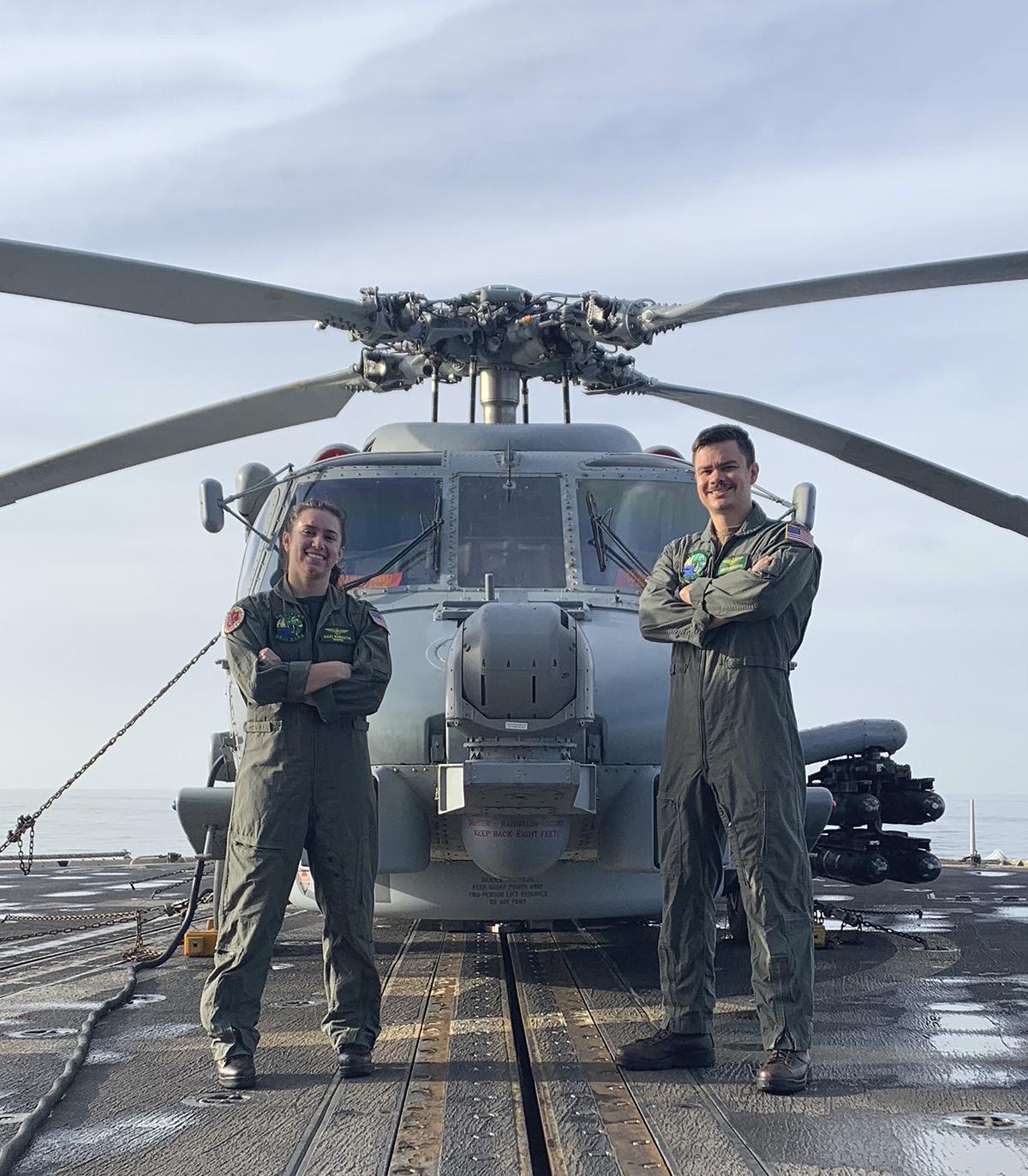Commodore's Corner Unmanned Integration within the HSC Community By CAPT Sean Rocheleau, Commodore, HSC Wing Pacific
H
ello from Helicopter Sea Combat Wing Pacific (HSCWP). It is my privilege in this “Commodore’s Corner” to frame the present state of unmanned integration within our community, which operates the MQ-8 Fire Scout, as well as stimulate conversation toward the future. I say a conversation because unmanned operations will only continue to grow across our global Navy and DoD, which will demand constantly evolving and refining tactics, techniques, and procedures (TTPs). The proverbial elephant in the room is the recent spate of mishaps involving both the MQ-8 Bravo and Charlie models of Fire Scout. While I cannot go into privileged information in this forum, there are areas that deserve scrutiny to include institutional integrity, communication, and ownership. These focus areas are foundational and serve to anchor this conversation during the forensic postmortem of mishap investigation. What is institutional integrity, and how does it apply to our Fire Scout Program? In general terms, as defined by Georgetown University’s Dr. Carol Taylor, institutional integrity is a “strong ‘FIT’ between the system’s stated mission and decision making at all levels of the system.” Assumptions made as part of the original Fire Scout CONOPS, and several other unmanned systems, have since proven to be flawed and have thus led to a credible gap between capabilities resourced and what squadrons experience when operating Fire Scout. A great example of a flawed assumption is how simple MQ-8 would be to maintain and operate. The original CONOP likened unmanned operations to checking a book out from the library, placing little emphasis on resourcing live flight operations during the basic phase of readiness generation. Clearly, this approach has proven to be impractical. To remedy this situation, one of the first actions taken by the HSC Community, several years ago, involved properly resourcing live events at Point Mugu and Wallops Island for operational squadrons preparing to deploy. In this same vein, as we move forward with unmanned systems integration in the Navy, we must continually challenge previous assumptions and constraints to ensure they remain valid. This is critical, as every community within Naval Aviation will have some type of unmanned system, and many of our early CONOPS were established with little institutional knowledge of the complexities of operating these systems at sea. In fact, one of the most important weapon systems to the Air Wing of the Future (AWOTF) is MQ-25, which will enable longer range strikes. The knowledge we garner from lessons learned within our community from the Fire Scout Program, and externally through other services, will be key to more effectively integrating unmanned.
Rotor Review #153 Summer '21
Fire Scout and Seahawk
Former JCS Chairman, General Martin Dempsey, described communication using the analogy of an oak tree with a vast arrayed root structure, and the challenge of distance between root and very top of the tree. The “signal to noise ratio” experienced by senior leaders sometimes makes communication signals from the deck plate a challenge to be heard, with compounding factors such as the COVID 19 pandemic making effective comms more problematic. We must be on the lookout for even the faintest of communication signals from our Sailors. As leaders, all of us are required to message up the chain of command critical gaps we are experiencing that introduce risk to either mission or force. Examples that come to mind are training systems or software updates and how accurately they replicate Fire Scout mission systems. We need to be agile and move at the speed of software. Finally, ownership is an anchor for process improvement. Casting blame is rearward looking and does not solve future issues. As lead Commodore for Fire Scout, I own the challenges and look forward to correcting the deficiencies we have discovered in the past several months. We should all embrace this leadership tenet to grapple with thorny issues, pushing the ones we cannot resolve ourselves up to the next higher echelon for resolution. The issues I am taking lead on are streamlining NATOPS, driving to a single T/M/S AVO, eliminating training simulator concurrency gaps, adding live flight events to the FRS, and most importantly, getting deployed flight hour generation on LCS to build experience and expand TTPs. John E. Jackson’s One Nation Under Drones: Legality, Morality, and Utility of Unmanned Combat Systems (on the CNO’s professional reading list) describes how every unmanned program has had to work through various technical or training challenges while the programs were in their infancy. The MQ-1 Predator has had over 100 mishaps, since its inception in the early 2000s, as detailed by the Washington Post. We will move beyond and learn from these 22









































